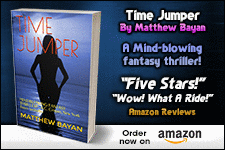Intensify your writing - replace description and summary with immediate scene. Visit www.matthewbaya
- Matthew Bayan
- Jun 28, 2017
- 2 min read
How to intensify your writing and replace descriptions and summary with immediate scene. An exercise. Visit www.matthewbayan.com #writing #writingtips #manybooks
3 Main Forms of Writing
Description
Summary
Immediate scene
As an editor, I see too much description. Setting the scene does not mean explaining every detail as if a detail defines a character. This is not interior decorating, or architecture 101, or physiology.
Immediate scene is the most important and effective form of writing. It shows the reader what is happening. And, oh, yes, something is happening, rather than a data dump. Too much of description and summary results in a data-dump.
New writers frequently start with a prologue which they feel is needed to explain the world building or the history of a character. 99% of the time, drop the prologue. Give information when it’s relevant.
Here are ways to minimize description and summary and keep the writing in immediate scene:
Can we work description into immediate scene?
Before:
Jack was tall. He had red hair. Stanley, his archenemy at school always made fun of him.
Instead of bland description of Jack, why not try dialogue to introduce the same information, but in an active way?
After:
“How’s the weather up there?” Stanley said.
Jack looked down and said, “I can’t hear you, Shorty; are you standing in a hole?”
Stanley said, “Okay, Duracell.”
A few feet away, one of the new kids said, “Why does he call him that?”
Bobby answered, “Copper top.”
“Oh, I get it. Ginger bashing. Sweet.”
So, here we see how to take blah-blah description and work it into much more interesting dialogue.
Can we work summary into immediate scene? (summary in bold)
Scott looked for Susan for two days. On the third day his mailbox coughed up a letter from her. What the hell was she doing in Seattle, he thought, eyeing the postmark? He poked his right index finger under the flap and ripped open the letter so fast, he got a paper cut.
One way to condense description is to capsulize it in a strong image.
Description vs. Image
Before: She had intense dark brown eyes set in a wide face. Her hair was, blah, blah, blah. You know how this goes: she was tall, her nose was straight and on and on down to the color of the buttons on her shirt.
After:
Her eyes looked like cigarette burns on a blanket.
Which do you think the reader will remember? The cigarette burn description is a line I read twenty years ago. I don’t remember anything about the book it was in. But I do remember the image.
Condense a description, intensify it, make it an image.










Comments